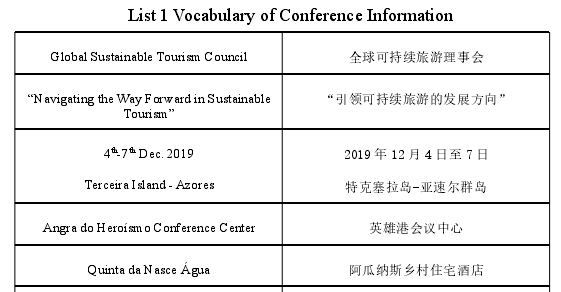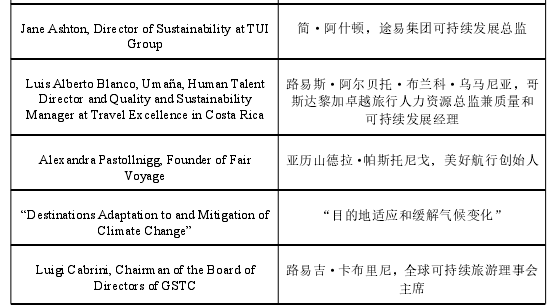本文是一篇英语论文,本报告中有四个主要发现,如下所示。第一个发现是,一般来说,翻译迁移理论适用于电子商务同声传译。尽管翻译移位理论被批评只在句子层面上起作用,但它恰好也非常适合信息处理单元不在句子层面上的人。在这一理论的指导下,确保了同声传译中句法线性策略的顺利进行,动态平衡了译员的能量分布,更好地实现了同声传译的目标。
Chapter 1 Theoretical Framework
1.1 Introduction to Translation Shifts Theory
In this part, concepts related to translation shifts and the content of TranslationShifts Theory are given first, and then discussions on this theory, positive andnegative, are presented.
1.1.1 Content of Translation Shifts Theory
The idea of translation shifts is first put forward by John. C. Catford in hismonograph A Linguistic Theory of Translation published in 1965. Catford is a famousBritish linguist who interprets translation from the viewpoint of linguistics. Hisanalysis is basically underpinned by Halliday’s linguistic theory. Catford (1965)defines translation as “the replacement of textual material in one language (SL) byequivalent textual material in another language (TL)” (p. 20) and he considers “thecentral problem of translation practice is that of finding TL translation equivalents” (p.21).
Based on his definition of translation, Catford further makes a conceptualdistinction between formal correspondence and textual equivalence. He considers thata formal correspondent is “any TL category which can be said to occupy, as nearly aspossible, the ‘same’ place in the ‘economy’ of the TL as the given SL categoryoccupies in the SL”, while a textual equivalent is “any TL text or portion of textwhich is observed on a particular occasion to be the equivalent of a given SL text orportion of text” (p. 27).
As far as Catford is concerned, textual equivalence outweighs formalcorrespondence. He further observes that formal correspondence can be onlyapproximate because every language is unique in itself, thus a change in linguisticform is imperative so as to achieve textual equivalence (p. 32). Therefore, thenecessity of translation shifts is justified as stated by Hatim that “when translationcannot be carried out by adhering closely to the linguistic form of the source text,textual equivalence is achieved through translation shifts” (2013, p. 18).
1.2 Applicability of Translation Shifts Theory to E-C SimultaneousInterpreting
This part is designed for two purpose: to introduce simultaneous interpretingbriefly and to explore the applicability of Translation Shifts Theory to E-C SI in threeaspects: the strategy of syntactic linearity in SI, interpreters’ energy distribution andobjectives of SI. Huge differences between English and Chinese naturally bring theidea of language conversion to the present author, and further lead her to TranslationShifts Theory. Translation is a kind of language conversion in essence. Proper shiftsare used to enable the TL to reproduce the meaning of the SL to the utmost extent andas perfectly as possible (Zheng & Cao, 2011, p. 20).
1.2.1 Translation Shifts Theory and Strategy of Syntactic Linearity
Before exploring how Translation Shifts Theory accords with the strategy ofsyntactic linearity in SI, a brief introduction to SI will be given. As one of the modesof interpreting, simultaneous interpreting is widely adopted in internationalconferences for its unique advantages. In simultaneous interpreting, when a speakerstarts to deliver a speech, interpreters begin to interpret what they hear into the TL.They carry on interpreting while the speech continues and they finish almost at thesame time as the speaker. In other words, interpreters speak simultaneously with thespeaker in the process, hence simultaneous interpreting gains its name (Jones, 1998, p.5).
Chapter 2 Task Description
2.1 Introduction to the Selected Panel Discussions
This interpreting practice takes the sixth and the seventh panel discussion of thisconference as the ST. The two panel discussions last three hours with huge amount ofinformation, so SI is adopted in this practice to save time and energy for allconference participants. A total of nine panelists all deliver impromptu speeches withthe support of PowerPoint slides and their presentations vary in styles. Briefintroductions to the speakers and major contents of the two panel discussions areshown as follows.
The topic of the sixth panel discussion is sustainable and responsibleprocurement, during which four senior managers of representative corporations andinstitutions at different levels share their own experience concerning sustainabilitycertification. Randy Durband, chief executive officer (CEO) of GSTC recalls someprogressive practices in sustainable and responsible procurement, and emphasizesmajor companies’ significant roles in this aspect. Jane Ashton, director ofsustainability from TUI Group suggests incorporating a contractual obligation toensure the sustainability of products and services in the supply chain. Luis Blancointroduces the National Certification of Businesses Scheme in Costa Rica. AlexandraPastollnigg, founder and CEO of Fair Voyage appeals for a shared marketing messagetowards sustainability.
The seventh panel discussion is named as destinations adaptation to andmitigation of climate change. It focuses on specific measures taken by globaldestinations in tackling climate change. Luigi Cabrini, chair of GSTC shows howserious climate change is nowadays through scientific statistics. Gerben Hardemanfrom the Dutch Travel Trade Association calls for open and transparent data sharingon carbon emissions.
2.2 Interpreting Process
This part aims to show a detailed process of the interpreting task. It consists ofthree parts: long-term and short-term preparations before interpreting, challengesduring interpreting and evaluations after interpreting.
2.2.1 Preparations before Interpreting
Consensus has been reached that for professional conference interpreters,preparation before interpreting is important and indispensable (Xu, 2018, p. 53).Before all the preparation work, the present author analyzes the objective and targetaudience of the interpreting task, which helps her have a better preparation.
The objective of the task is to faithfully reproduce all panelists’ speeches in acomprehensible and idiomatic way. Target audience of the conference are roughlydivided into the following three groups: tourism destinations, hotels, transportationand other tourism entities, major or minor; tourism policymakers at all levels; experts,scholars and welfare organizations committed to green economy and environmentalprotection. For target groups as such, they are familiar with tourism and itssustainable development, so explanations may be needed on contents related toculture rather than expertise in travel and tourism.

Chapter 3 Category Shifts Applied in the Interpreting............................. 18
3.1 Structure Shifts..................18
3.1.1 From Passive Voices to Active Voices................................. 19
3.1.2 From Affirmative Expressions to Negative Expressions ..............................20
3.1.3 From Inanimate Subjects to Animate Subjects................................ 22
Conclusion.................... 35
Chapter 3 Category Shifts Applied in the Interpreting
3.1 Structure Shifts
As sentence structures are different in English and Chinese, structure shifts areneeded to make English sentences reproduced in a way that is more in line with the expression habits of Chinese. There are four kinds of structure shifts used in this E-Cinterpreting practice and they are shifts from passive voices to active voices, shiftsfrom affirmative expressions to negative expressions, shifts from inanimate subjectsto animate subjects, and shifts from postpositive attributives to prepositiveattributives.
3.1.1 From Passive Voices to Active Voices
Passive voices are widely used in English and their main semantic function is toexpress objectivity, while they enjoy much less frequency in Chinese (Wang Hui,2007, p. 115). Besides, passive voices in the Chinese language are often associatedwith negative effects or undesirable results (Wang Li, 2015, p. 141). As a result,passive voices in English tend to be shifted to active voices in Chinese. It is worthnoting that in some cases, translating a passive voice in English into a passive one inChinese is also acceptable, as long as the meaning can be understood by Chineseaudience easily. The following examples show the cases where passive voices need tobe shifted to active ones.
Example 1: It makes sense to if we want to have a business in our supply chain certified,we can’t expect them to do it tomorrow or next month.
如果我们想让供应链上的企业取得认证,我们不能期望他们明天或者下个月就做到。

Conclusion
Major Findings
There are four major findings in this report, which are listed as follows. The firstfinding is that generally speaking, Translation Shifts Theory is applicable to E-Cconference simultaneous interpreting. Although Translation Shifts Theory is criticizedfor functioning only within the level of sentence, it happens to be very suitable for SIwhose information processing unit is not beyond the sentence level, too. Under theguidance of this theory, the smooth progress of the syntactic linearity strategy in SI isensured, the energy distribution of the interpreter is dynamically balanced andobjectives of SI are better achieved.
Secondly, level shifts and category shifts contribute differently to this practice.Level shifts contribute less to accomplish this task because both English and Chinseshave their own means to present single and plural forms, various tenses and moods. Incomparison, category shifts play a greater role in language conversion at the microlinguistic level. Here, category shifts mainly refer to structure shifts, class shifts andunit shifts. Their contributions will be analyzed in detail below as the third finding ofthis report.
Thirdly, category shifts help to promote the interpreter’s overall performance inSI in both the process and the outcome. As for the process, the smooth progress of thesyntactic linearity strategy is guaranteed and the interpreter’s energy distribution isoptimized. For one thing, there are some cases when the ST cannot be translatedliterally, or when some expressions cannot find their equivalents in the TL. Then theinterpreter uses translation shifts to enable the interpreting to proceed smoothly. Foranother, flexible shifts help the interpreter facilitate language conversion under hugeenergy burdens. She encounters quite a few challenges concerning accents, unfamiliarterminologies coupled with unclear logic in some panelists’ speeches. Proper shiftssave her from more efforts paid in speech production, so she can devote herself tolistening and comprehension.
reference(omitted)
